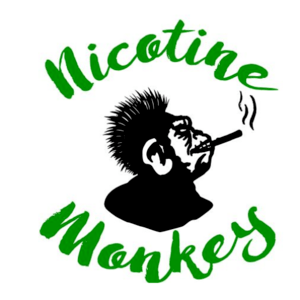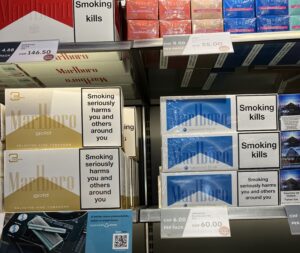What does the US National Cancer Institute have to say about quitting smoking?
On their website there’s a long section titled ‘How To Handle Withdrawal Symptoms and Triggers When You Decide To Quit Smoking’. This implies that you may indeed suffer such symptoms and that ‘triggers’ are also something you will need to be aware of.
These are some of the withdrawal symptoms listed:
Nicotine cravings, anger, frustration, irritability, anxiety, depression, weight gain, dizziness, increased dreaming, and headaches .
Then there’s an even longer list of questions, including the following (paraphrased):
What can I do about anger, frustration, irritability, anxiety, weight gain? How can I resist the urge to smoke when I’m feeling stressed or bored, or when I’m having a coffee or tea? How can I start the day without smoking? How can I enjoy a meal without smoking?
To these weighty questions, for example, on how to enjoy a meal without smoking, they have the following simplistic and patronising suggestions:
- Know what kinds of foods increase your urge to smoke and stay away from them
- If you are alone, call a friend or take a walk as soon as you’ve finished eating
- Brush your teeth or use mouthwash right after meals
- If you have coffee or a fruit drink, concentrate on the taste
- Wash the dishes by hand after eating – you can’t smoke with wet hands!
- Eat at smoke-free restaurants
It might be more useful to consider how it is that non-smokers can enjoy a meal without smoking.
Apart from this prestigious institution, there are many resources available on the internet which offer the same discouraging approach. Some are in the form of books describing how, after a long struggle, the author eventually managed to quit smoking, but these merely reinforce the idea that it’s terribly difficult.
For example, one author whom I contacted, wrote that he battled with nicotine addiction for over fifty years, took stop smoking drugs, suffered health problems including a heart attack, and then, with the help of the self-styled world expert on smoking and addiction, Robert West, he managed to activate a psychological switch which enabled him at last to quit. He didn’t take kindly to my pointing out that, although I was glad he stopped, such an awful struggle is unnecessary. In my experience of having successfully treated hundreds of smokers, it’s simple to activate the switch. All you need is the right information and support. Unfortunately, the emphasis that doctors and others place on the physical aspects of smoking cessation (horrible withdrawal symptoms, alleged chemical changes in the brain, etc.) and the apparent need for drugs or nicotine products as a ‘treatment’ for quitting, is likely to be more of a hindrance than a help.
And it’s not just I who say this. An article in the Journal of the American Medical Association in January 2016 concluded that ‘Three smoking cessation therapies are equally effective’ – or ineffective, as they might more accurately have said.
They compared three conventional smoking cessation treatments: nicotine patches, the drug varenicline, and nicotine patches together with varenicline. At one year the rates of abstinence were 21, 19 and 20 per cent, respectively. In other words, eighty out of one hundred smokers were still puffing away one year later in spite of these treatments. It should be added that the participants didn’t just receive nicotine or drugs; they also had the carbon monoxide levels in their breath measured and they received counselling!
But what sort of counselling? If it was the sort offered by Professor West, who is rather shy about saying how many smokers he has actually treated, it’s hardly surprising the results are so poor.
What, then, should be done?
The emphasis in smoking cessation should shift away from nicotine products and drugs to being nicotine- and drug-free. More attention should be paid to evidence which shows the best way stop smoking is – just stop!
Many smokers achieve this on their own, and for those who need help, the Symonds Method is simple, easy to understand, and gimmick-free.
© Gabriel Symonds


Leave A Comment